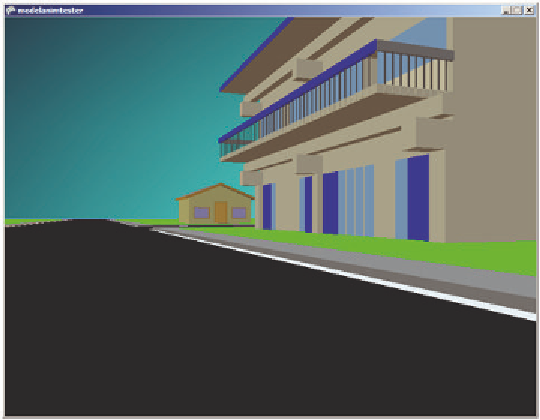Graphics Programs Reference
In-Depth Information
Figure 23. A basic virtual world with an asphalt jungle and buildings
Figure 24. Texture maps for a road (left) and a sidewalk (right)
one for the roads and another for the sidewalks
in our virtual world example.
Applying a texture map to an object is a three-
step process: (1) importing the texture map into
the modeling program as a material; (2) selecting
the object or the faces of the object that will con-
tain the texture map; and (3) applying the texture
map to the object or faces. One can also specify
whether a texture map is stretched onto a face or
is tiled. Figure 25 depicts the roads and sidewalks
with and without texture maps.
Figure 26 depicts the virtual world with texture
maps when viewed from within the game devel-
opment environment.
Texture mapping is straightforward when the
maps are applied to rectangular objects and faces.
When the faces are non-rectangular, as is often
the case with models of human heads, texture
mapping can be non-trivial and very time consum-


Search WWH ::

Custom Search